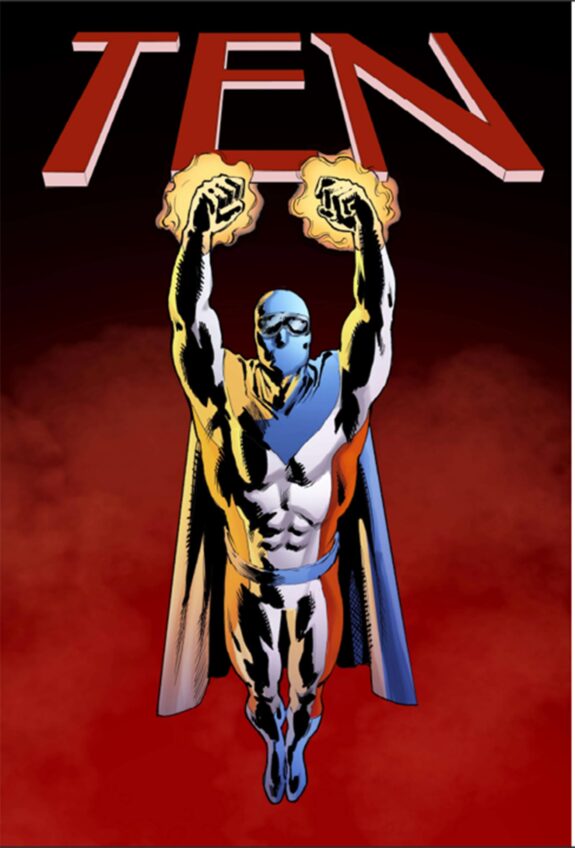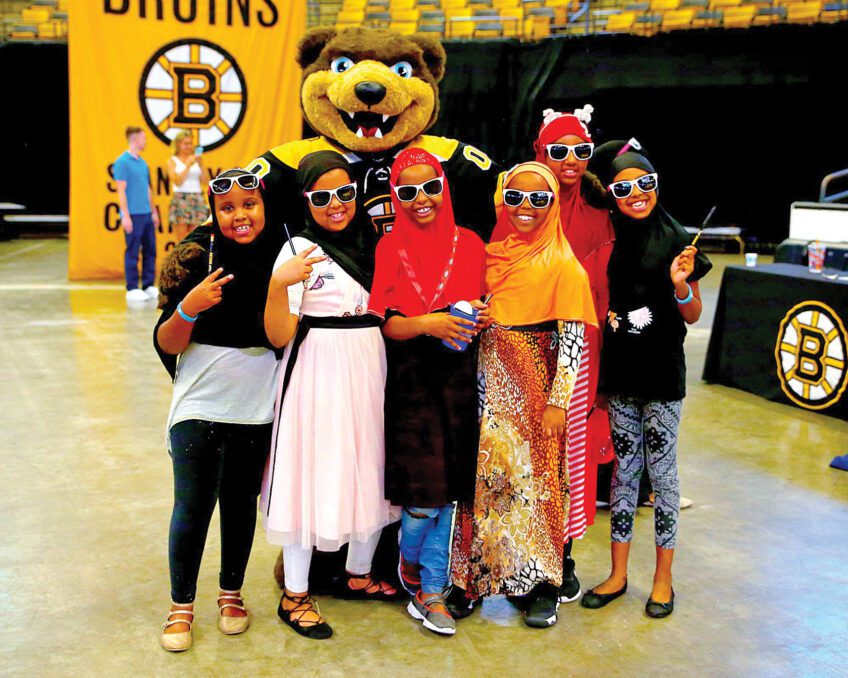
Like a wind sweeping down a plain, an exuberant production of the great Rodgers and Hammerstein musical “Oklahoma!” surges through the main stage of Trinity Reportory Company in Providence through June 5, lifting both the cast and audience aloft in its high spirits.
Reviving one of the great American musicals, director Richard Jenkins, a noted stage and movie actor, and his wife, accomplished choreographer Sharon Jenkins, have turned the theater into a setting of ensemble grandeur and duo intimacy. They orchestrate masterful staging and lighting by set designer Eugene Lee, a crack live orchestra led by keyboardist and musical director Michael Rice, classic costumes by Toni Spadafora, and an able cast that includes, on opening night, some scene-stealers who rival the romantic leads in magnetism.
The first collaboration between composer Richard Rodgers (1902–1979) and lyricist-dramatist Oscar Hammerstein II (1895–1960), whose subsequent Broadway hits would include other masterworks such as “Carousel” and “South Pacific,” this quintessential American musical is based on a 1930 play by Oklahoma native and part Cherokee Rollie Lynn Riggs (1899 – 1954).
Hammerstein expanded its story and crafted the lyrics to melodies by Rodgers, who created such irresistible songs as “Oh, What a Beautiful Mornin’,” “The Surrey with the Fringe on Top,” “I Cain’t Say No,” “People Will Say We’re in Love,” and “Oklahoma!”
Their production makes the music integral to the plot — a first for a Broadway musical — and when it debuted on Broadway in 1943 it ran for five years. The show spawned many touring productions and in 1955 became an Academy Award-winning movie. Trinity’s production is faithful to the original and its abiding power to stir hearts and spirits.
About two hours long with one intermission, the Jenkins production turns the entire theater into a performance space that shifts between scenes of intimacy and a sense of wide, open space as well as the story’s moments of sunshine and darkness.
Pioneer spirits
The production opens with the four characters who are also at the center of the Riggs story: Curly, a cowboy courting farm girl Laurey, who pretends to shrug off his attentions; her Aunt Eller, a ranch owner; and, spoken of but not yet seen, Jud, a hardworking farmhand but brooding loner who longs to escort Laurey to the upcoming square dance.
Around these four swirl townsfolk and friends, including big-spirited, solid Will, engaged to Ado Annie, a sweet and boy-crazy girl whose anthem features the refrain, “I’m jist a girl who cain’t say no.”
“Oklahoma!” is about sharing the land, getting along and coming together. While following the progress of the two courting couples, its plot touches on the friction between farmers and cowboys over water rights and fencing as well as the tragic outsider, Jud, whose only memory of human tenderness is Laurey’s visit to his cabin to bring him tea when he was in bed with fever.
All of this is brought to life with stage magic and actors who can act, sing and dance in numbers that vary from a square dance to a brawl. Rendering the original choreography by Agnes de Mille (1905-1993), these scenes include a rendering of the subconscious — a dream ballet in which Laurey imagines Jud and Curly as rival suitors.
Jenkins and Lee expanded the stage vertically as well as horizontally to create the production’s sense of space. They hacked seats out of the theater’s first floor to lengthen the stage and then inserted four small platforms, each a performance space, in the semicircular upper tiers of audience seating. Makeshift fencing surrounds the audience like a corral. Perched on a fifth platform, the seven-member orchestra is visible to all.
Actors scale the sets and perform from these platforms as well as on stage, bringing the audience close to the action. Illustrations on a giant backdrop stand in for sets such as a dress shop or barroom. Props are few but impressive, such as the handsome leather saddle Curly brings out as he bids against Jud in an auction for Laurey’s boxed lunch. Cowhands pass around an innocent-looking kaleidoscope that shows different scenes of burlesque-clad women. Ensemble members on the platforms take the poses, so the audience sees the same views.
Talented team
A cast of 15 actors performs a total of 20 roles. They include two indispensible ensembles. The female trio comprises Shura Baryshnikov, Hannah Spacone, and Royer Bockus, who also plays Gertie, a flirty girl with a high-pitched laugh. Equally superb is the male ensemble: Jon Cooper, Taavon Gamble, Stephen Ursprung, and Kevin Patrick Martin.
The show’s central foursome is paralleled by a comic quartet in Will, Ado Annie and Ali Hakim, a Persian peddler who has seduced Ado Annie but now wants to escape her. Stephen Thorne is great fun to watch as Ali, and Tom Gleadow is convincing as Ado Annie’s sober father, who will award her to the suitor with the most cash.
In the opening scene, when Charlie Thurston’s Curly lets out with “Oh, What a Beautiful Mornin’,” the dream that is this musical begins to unfold on stage. Thurston and Rachael Warren, as Laurey, both have strong voices but, on opening night, there was little palpable chemistry between them. Warren’s Laurey was a bit too convincing in her toughness as she fended off Curly’s entreaties.
Aunt Eller, as performed with warmth, wit, humor and wisdom by Janice Duclos, is the heart of the show. Early in the first of two acts, Jude Sandy is a scene-stealer as his Will Parker, Ado Annie’s cowboy suitor, lets loose with a stirring delivery of “Kansas City,” conveying his character’s optimism and solid strength. As his eagerly amorous fiancée Ado Annie, Rebecca Gibel is just right with her character’s sweet and ditzy flirtatiousness, and she revels in an added touch of slapstick as she pounces on a man in the front row while singing that she just can’t say no.
Another showstopper is Joe Wilson, Jr., who injects restrained dignity into the role of the damaged Jud. After Curly confronts Jud in his cabin, on a platform in an otherwise darkened theater, Wilson deliver’s Jud’s aria, “Lonely Room,” with poignant power.
The Trinity production handily shifts from close encounters to large-scale spectacle. In a near-finale, as all but Jud line up on stage and sing “Oklahoma,” the surging harmony of their chorus sweeps through the theater like a wind rolling on the plains.






